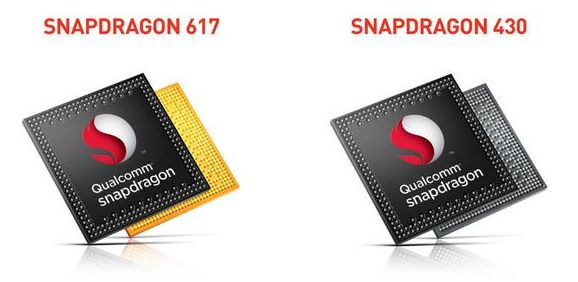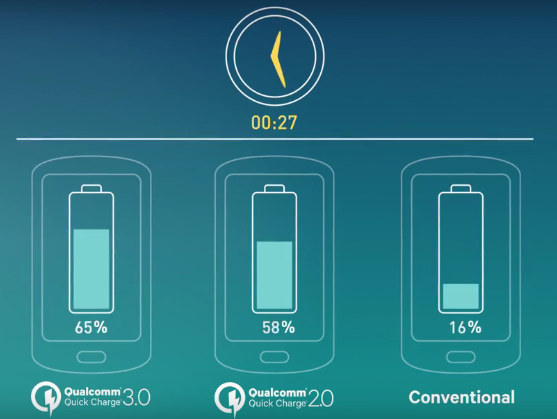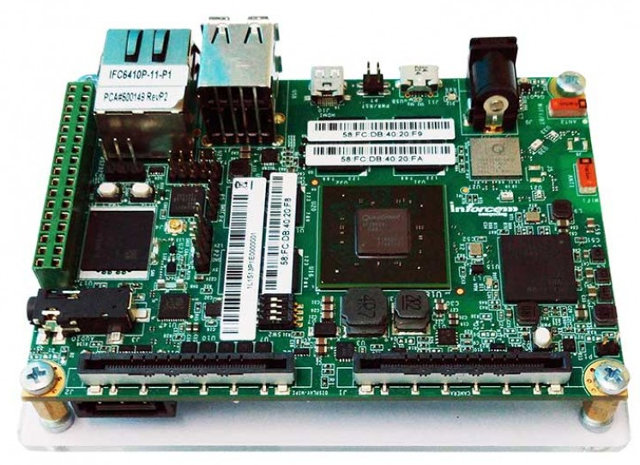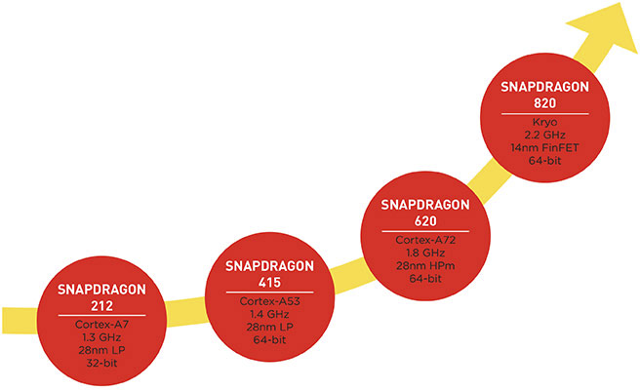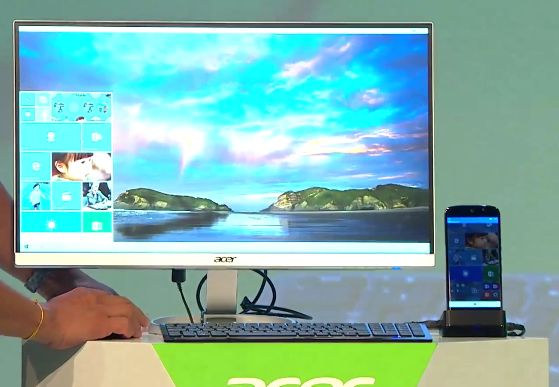Google released Android 6.0 “Marshmallow” SDK and final preview last month, and the first stable Android 6.0 release is expected on the first week of October on recent Nexus devices, including the latest Nexus 5X and Nexus 6P just announced by Google. Here are the specs of the two phones: LG Nexus 5X Specifications SoC – Qualcomm Snapdragon 808 (MSM8992) dual core Cortex-A57 @ 1.82 GHz and quad core Cortex-A53 @ 1.44 GHz with Adreno 418 GPU System Memory – 2GB LPDDR3 Storage – 16 or 32GB storage, no micro SD slot Display – 5.2″ capacitive touchscreen (1920×1080 resolution), Gorilla Glass 3 with fingerprint and smudge-resistant oleophobic coating Audio – Front facing speaker, 3 microphones with noise cancellation, 3.5mm audio jack Connectivity – Wi-Fi 802.11 a/b/g/n/ac 2×2 MIMO, Bluetooth 4.2, GPS with A-GPS and GLONASS, NFC Cellular Connectivity All versions – GSM/EDGE: 850/900/1800/1900MHz; single nano SIM card North America – […]
Linux Kernel Mainline Status of Mobile SoCs Presentation at Linaro Connect SF015
Linaro Connect San Francisco 2015 is taking place this week, and several 96Boards have been presented including LeMaker Hikey and Qualcomm DragonBoard 410c, both of which will finally be available by the end of the year. But there are also many technical presentation and discussions that are uploaded to LinaroOnAir Youtube account, and they’ve greatly improved video and audio quality compared to the past, with presentation slides also available on Slideshare. I’ve just watched one of the session entitled “Kernel Mainline Status of Mobile Chipsets” by Tim Bird, Sony Mobile. Also the talk focus on mobile SoC, it’s also relevant to other consumer electronics products, and some embedded systems. The presentation states the extend of the issues, shares comparisons between the vendor device tree and mainline, and explains how developers can participate, with the talk ending with a discussion within the group of attendees. Here’s a summary of some of […]
Qualcomm Unveils Octa-core Cortex A53 Snapdragon 430 and 617 Processors
Qualcomm has unveiled two new octacore 64-bit ARM processors for mid-range smartphones with Snapdragon 430 and Snapdragon 617 Cortex A53 SoCs, both of which support the recently announced Quick Charge 3.0 standard and embed LTE connectivity. Snapdragon 430 Snapdragon 430 key features and specifications: CPU – 8x ARM Cortex A53 up to 1.2 GHz GPU – Qualcomm Adreno 505 GPU supporting up to OpenGL ES 3.1+ DSP – Qualcomm Hexagon 536 DSP Memory – LPDDR3 800MHz Storage – eMMC 5.1, SD 3.0 (UHS-I) Modem – Snapdragon X6 LTE – LTE Cat 4 (up to 150 Mbps DL/75 Mbps UL) Wireless Connectivity – WiFi 802.11n/ac (Qualcomm VIVE 2-stream with MU-MIMO), Bluetooth 4.1 + BLE, GPS (Qualcomm IZat Gen8C) Display – Up to 1080p on device and output Video – Up to 1080p at 30 FPS; Codecs: H.264 (AVC), H.265 (HEVC) Audio – Fluence HD noise cancellation technology Camera – Up to […]
Qualcomm Quick Charge 3.0 Promises to Charge Phones About 3x Faster Than Conventional Devices
Qualcomm has recently announced the latest version of its Quick Charge technology that allows to charge supported smartphones much faster than typical smartphones using a 5V charger. The company claims that Quick Charge 3.0 enabled smartphones can typicallly charge from zero to 80 percent in about 35 minutes compared to almost 90 minutes with conventional devices. Quick Charge 3.0 adds support for Intelligent Negotiation for Optimum Voltage (INOV), a new algorithm developed by Qualcomm Technologies that allows mobile devices to request optimal power transfer (3.6V to 20V in 200mV increments), while maximizing efficiency, which – together with other improvements – increases power efficient by 38% compared to Quick Charge 2.0, and allows charging the device twice as fast as possible with Quick Charge 1.0. That means the voltage and amperage will change during charging between 3.6V to 20V by 200mV increments, instead of 5V, 9V, 12V, and 20V for QC […]
Inforce 6410Plus Single Board Computer with Snapdragon 600 SoC Sells for $98 (Promo)
Inforce 6410Plus SBC is the successor of Inforce 6410 board, also based on Qualcomm Snapdragon 600 processor (APQ8064), but compared to the first version of the board, it adds GPS/Glonass, some MIPI CSI and DSI interface,and a few others changes. The normal price is $143, but it is currently selling for $98 for a limited period. I’ve reproduced the specifications below as a reminder: SoC – Qualcomm Snapdragon 600 (APQ8064) Quad Core Krait 300 processor @ 1.7GHz + Adreno 320 GPU System Memory – 2GB on-board PCDDR3, up to 533MHz Storage – 4GB eMMC + μSD card connector + SATA interface Connectivity: 802.11 b/g/n WiFi (Atheros QCA6234) Bluetooth 4.0 (Atheros QCA6234) 10/100/1000bps Ethernet (Atheros 8151) GPS/GLONASS Video and Audio Interfaces: μHDMI (1080p) 2x MIPI-CSI2 (4-lane, up to 20MP camera @ 15 fps) Dual MIPI-DSI (4 lane) – Primary : up to QWXGA (2048 × 1536), 60 Hz refresh rate; Secondary: […]
Qualcomm Snapdragon 820 Promises Twice the Performance & Power Efficiency of Snapdragon 810
Qualcomm has provided more details about Snapdragon 820 processor featuring custom-designed 64-bit ARM Kryo cores, an Adreno 530 GPU and an Hexagan 680 DSP, with claims that it should be twice as fast and consume half the power of Snapdragon 810 processor with Cortex A57 and A53 cores. Based on the chart below, it will also be faster than Snapdragon 620 with Cortex A72 and A53 cores. Snapdragon 820 will feature four Kryo cores (succeeding Krait cores) clocked at up to 2.2 GHz and be manufactured using 14nm FinFET process technology. Adreno 530 GPU is expected to deliver over 40% performance improvement over Adreno 430 GPU while also keeping power consumption 40% lower, a new Spectra camera dual ISP will support 14-bit sensors, and Hexagon 680 DSP adds a separate low power DSP for always-on sensor processing, and support for HVX (Hexagon Vector eXtensions) to be used for advanced imaging […]
Acer Jade Primo is the First Smartphone PC Running Windows 10 Continuum
At least two operating systems companies are working on mobile desktop converge: Microsoft with Windows 10 Continuum and Canonical with Ubuntu, Mir and Unity 8. There are still software and hardware challenges ahead, but I envision that in a couple of years my smartphone will also be my Ubuntu powered computer. But so far it looks like Microsoft might be ahead, as jointly with Acer they announced and demo Windows 10 Continuum on Jade Primo smartphone. The smartphone itself is powered by a Qualcomm Snapdragon 808 processor, with a 5.5″ AMOLED display, and 21MP & 8 MP cameras. I could not find details about RAM and storage. When the phone is connected to a dock via its micro USB to HDMI (MHL) cable, it pairs with Bluetooth mouse and keyboard, and you can simply use Windows 10 just like on a real computer running Office, browsing the web and so […]
Linux 4.2 Release – Main Changes, ARM and MIPS Architectures
Linus Torvalds released Linux Kernel 4.2 last Sunday: So judging by how little happened this week, it wouldn’t have been a mistake to release 4.2 last week after all, but hey, there’s certainly a few fixes here, and it’s not like delaying 4.2 for a week should have caused any problems either. So here it is, and the merge window for 4.3 is now open. I already have a few pending early pull requests, but as usual I’ll start processing them tomorrow and give the release some time to actually sit. The shortlog from rc8 is tiny, and appended. The patch is pretty tiny too. Go get it, Linus Some notable changes made to Linux 4.2 include: File systems New features for F2FS including per file encryption CIFS support SMB 3.1.1 (experimental) Cryptography – Jitter Entropy Random Number Generator, Chacha20 stream cipher and Poly1305 authentication (RFC7539),New RSA implementation. See lwn.net […]




